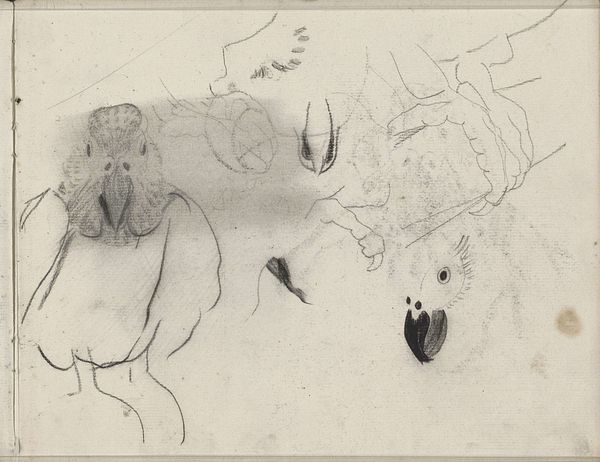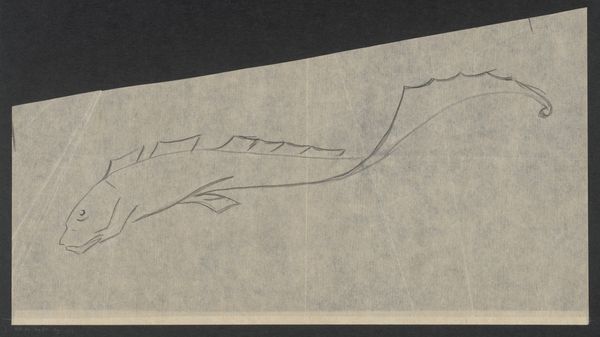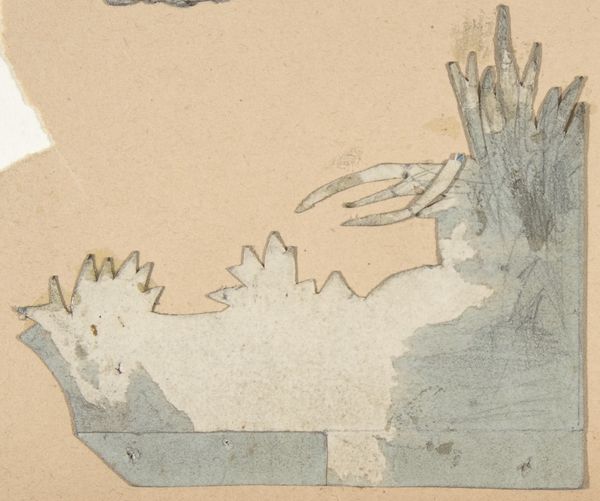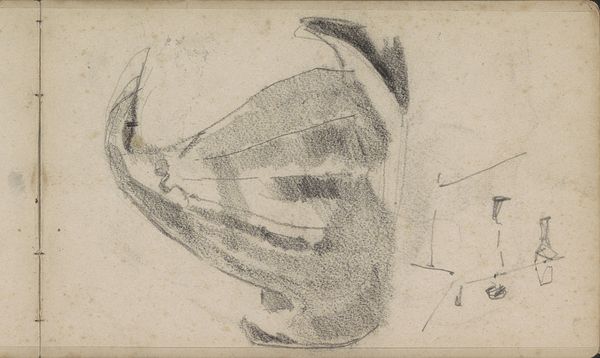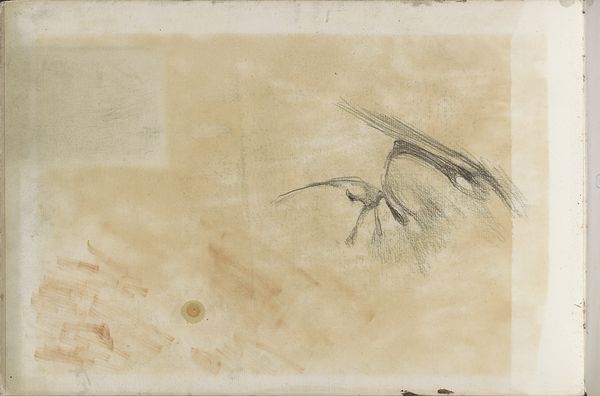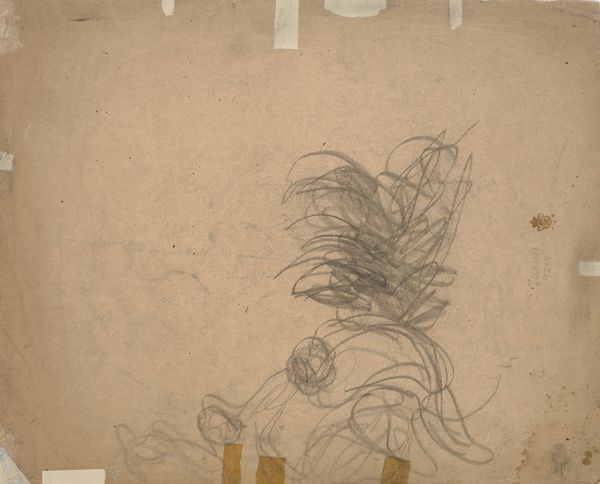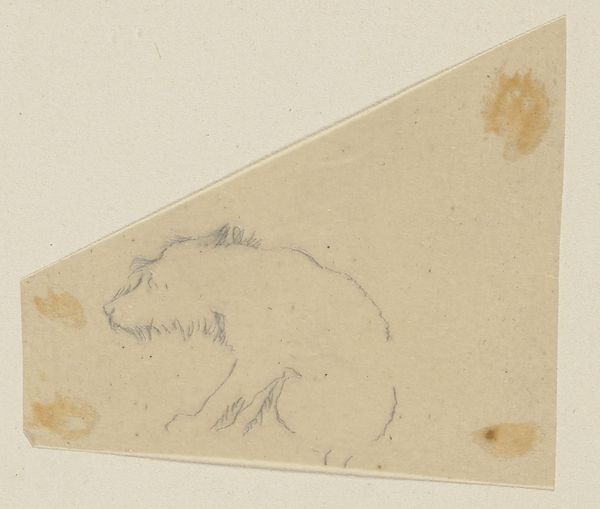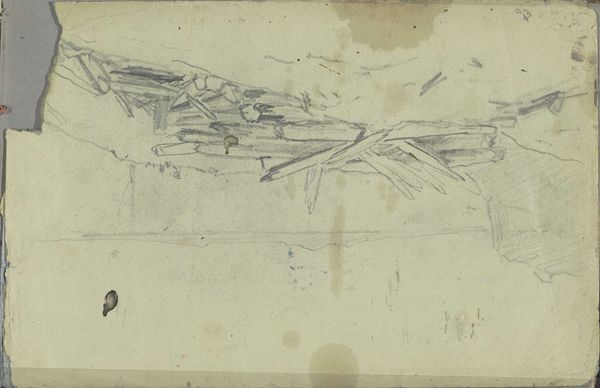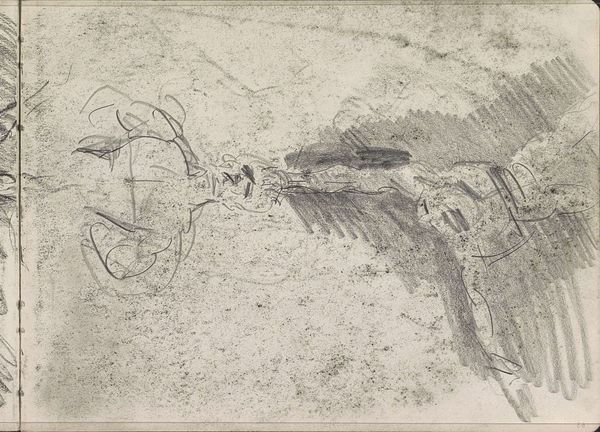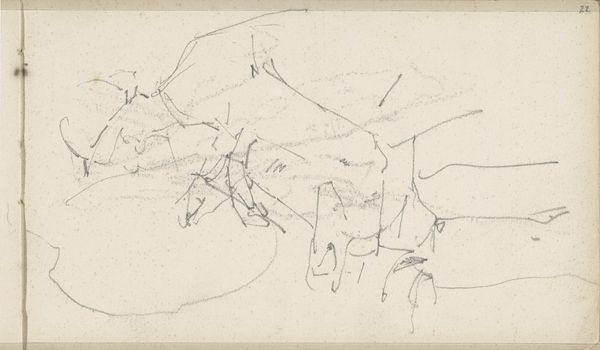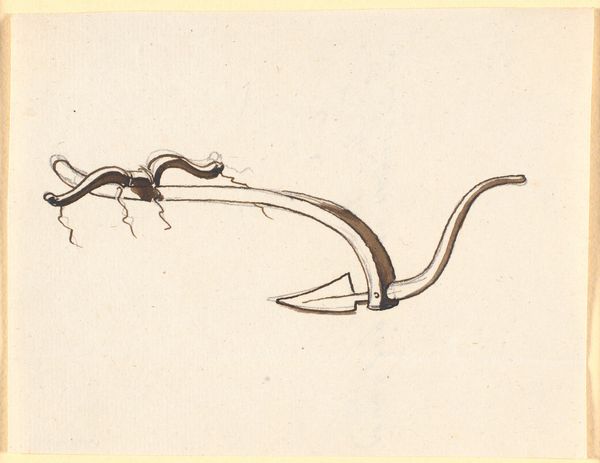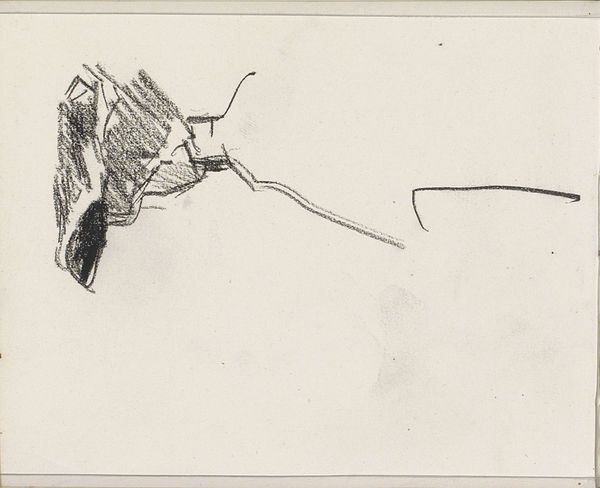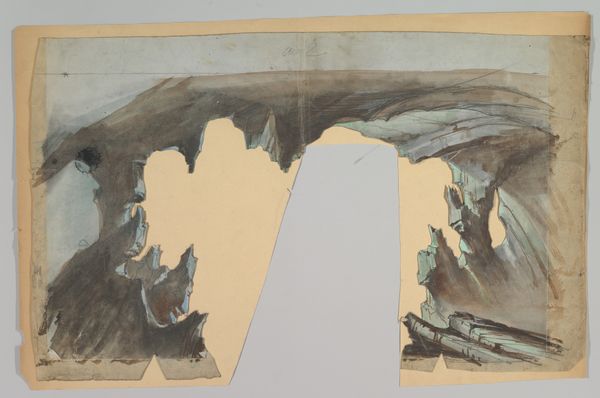
drawing, watercolor
#
drawing
#
landscape
#
watercolor
#
romanticism
Dimensions: 204 mm (height) x 271 mm (width) (bladmaal)
Curator: Johan Thomas Lundbye created this watercolor and pencil drawing, titled "Trunk of an Olive Tree with a Packsaddle," around 1845. What strikes you first about it? Editor: The composition is intriguing, almost whimsical. There's a stark contrast between the carefully rendered packsaddle and the sketchy, ethereal quality of the tree trunk. The cool blue background creates an isolated, contemplative mood. Curator: Absolutely. Lundbye was deeply embedded in the social realities of his time. One interpretation is the contrast symbolizes the connection between the idealized pastoral life, suggested by the olive tree, and the tools facilitating movement and trade, like the saddle, vital components in shaping rural economies and connecting distant markets. Editor: I see your point, but consider the formal aspects. The saddle is brought to the front through a controlled color palette of muted browns, creamy whites and dark greys with small dashes of orange-red accents. The forms are clearly articulated in this way. It brings a tactile feeling of soft hide and worn canvas, inviting us to engage on a material level. Curator: Lundbye’s Romantic approach often idealizes rural life, masking social realities. We shouldn't disregard that packsaddles weren't merely aesthetic objects; they represent labor, transportation, and the broader economic structure influencing daily life for ordinary people in the mid-19th century. Editor: True, and the roughly sketched trunk and barely suggested landscape around the central objects seem like shorthand for a bigger landscape. They create a stark emptiness that only enhances the tangible realism of the packsaddle. There's a balance achieved using line, color and the negative space of the page itself to give a heightened presence to the object. Curator: It’s about understanding the cultural context as well, of the conditions under which the saddle was produced and who used it. This, in turn, broadens our reading of Lundbye’s artistic intention beyond the purely aesthetic or subjective. Editor: Precisely, and these seemingly disparate objects form a cohesive tableau by echoing shape, color and tone. Viewing these aesthetic commonalities heightens our experience, offering layers of meaning—social and structural. Curator: Thank you, this has illuminated different but very rich facets of this subtle artwork. Editor: A thought-provoking conversation; hopefully, this provides our audience a richer understanding of Lundbye's artistry and intent.
Comments
No comments
Be the first to comment and join the conversation on the ultimate creative platform.
